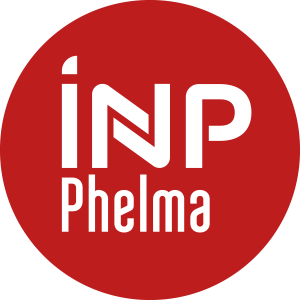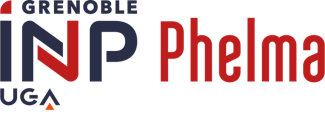Number of hours
- Lectures 12.0
- Projects 0
- Tutorials 12.0
- Internship 0
- Laboratory works 0
ECTS
ECTS 2.0
Goal(s)
We will explore dominant physical phenomena and basic mechanisms (mainly from two-phase or free-surface situations) that arises in selected microfluidics situations and applications (from existing examples and realisations). Surface tension, contact angles (various concepts and various scales of them) take an important place in this physics. Whenever it is relevant, we will use three levels of description (coupled): (i) a molecular scale (usually the source of the phenomena and of the forces), (ii) an intermediate scale with a continuum description of the phenomena, (iii) a macroscopic but sub-millimetric scale to describe the micro-system of interest.
Contact Frederic AYELA, Olivier LEBAIGUEContent(s)
(Two-phase) Microfluidics 12h
1. General overview of the physics and single-phase microfluidics
1.1. Historical first example of microfluidics
1.2. The range of two-phase microfluidics defined from the physical scales
1.3. The “simple” cases of single-phase microfluidics (liquid and gas)
1.4. Surface tension and contact angles
Exercises on essential mechanisms at the micro-scale
2. How to move fluids? Pumps and valves…
2.1. Valves and fluidic diodes
2.2. Single-phase pumping devices
2.3. Digital versus continuous two-phase micro-flows
2.4. Two-phase pumping devices
2.5 How to move fluid inclusions?
2.6. Extra 1: The notion of PCR
2.7. Extra 2: The Onsager-Casimir relations applied to actuators
3. Wetting, &contact line models: liquid-vapor lines, micro-layers, quasi-singular contributions…
3.1. Some strange wetting experiments
3.2. Experimental facts of the quasi singular behavior
3.3. The static contact line
3.4. The moving contact line
4. Two-phase flow configurations in micro-channels
4.1. Experimental facts
4.2. Starting with the Taitel&Dukler flow configuration maps
4.3. Modifications of the Taitel&Dukler map for small-diameter pipes
4.4. Other aspects of flow configurations
4.5. Liquid film deposition on internal walls of pipes
5. Heat pipes and heat spreaders
5.1. The role of spreaders in micro-systems
5.2. Constructing heat pipes and micro-heat-pipes
5.3. Working limits of heat pipes (steady flows and effects of channel dimensions)
6. Short description of physical mechanisms involved in very recent applications
From several papers selected from the last international microfluidics conferences
(i.e. Proc. 4th European Conf. on Microfluidics, 10-12 December 2014, Limerick, Ireland,
Proc. 3rd European Conf. on Microfluidics, Heidelberg, 3-5 December 2012,
2nd European Conference on Microfluidics, 8-10 December 2010, Toulouse, France)
Prerequisites
Basics knowledges in general physics (fluid mechanics, surface tension, heat conduction) + curiosity !
Written examination + short oral presentation on a microfluidics conference paper
Examen Ecrit : 75% + Court exposé : 25%
This course brings 2.0 ECTS to students in UE Energetic (M2 MatEng)
This course brings 3.0 ECTS to students in UE Energetic
- Introduction à la microfluidique, P. Tabeling, Belin, 2003.
- Microfluidique, Ouvrage dirigé par S. Colin, Chapitre 6 : Microfluidique diphasique (O. Lebaigue & B. Mathieu), Traité Egem, Hermès Science Publications, 2004.
- Introduction à la microfluidique, P. Tabeling, Oxford University Press, 2005.
- Microfluidics, Book directed by S. Colin, Chapter 6: Two-phase microfluidics (O. Lebaigue), Wiley, 2010.



